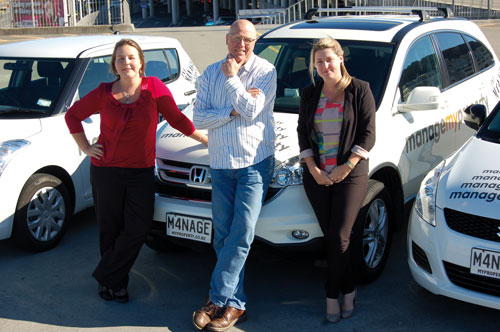Selling your ‘good idea’
Jonny Mole introduces the concept of ‘audience equity’ and its increasing relevance within the emerging ‘connection economy’. In a three-part minseries, he outlines how the concept applies to the functions of Selling, Marketing and Recruiting within an ambitious business.
Jonny Mole introduces the concept of ‘audience equity’ and its increasing relevance within the emerging ‘connection economy’. In a three-part minseries, he outlines how the concept applies to the functions of Selling, Marketing and Recruiting within an ambitious business.
Let’s start at the beginning. Every business in the world starts somewhere, in some way, when someone has a ‘good idea’.
The best ideas manage to garner some interest – they attract an audience. They hold perceived value of some nature and they get people talking. Where the perceived value is large enough, they then tend to attract people interested in buying, selling or making the idea come to life, or helping to form and fund the business that will allow that to happen.
In the world of owner-operator business, this typically involves hiring staff to help produce the product, run the business and grow interest within the market. As the business evolves the owner-operator (usually the guy with the original good idea) tends to call the shots. Those with good ‘gut instinct’ may succeed in building a business that has customers, a product and a well running process to connect A to B. This is where so many Kiwi businesses get to – they employ some staff, manage to keep their customers happy and generate an income to support the owner’s lifestyle. Many are content to reach a point where the business ‘runs itself’ and then either milk it until retirement, or sell it.
Then there are those who aren’t content with a ‘lifestyle’ business. Many entrepreneurs wish to build something with lasting value, something that outlives the ‘guy with the good idea’ and creates a legacy built around something worthwhile. They believe their good idea has broader appeal and can create value on a larger scale – a business that can become an “asset”.
The leader of a growing business inevitably reaches a point where they can no longer do it all themselves. This is where the concept of ‘delegated’ responsibility comes in; and the old adage that if you’re going to build an asset, you need someone to make the product, someone to sell it and someone to look after the business.
And so starts the process of finding the ‘sales’ guy, the ‘ops’ guy and the ‘finance’ guy – the owner tries to figure out which role he or she should personally assume, if any at all.
Because can a business really be called an asset if it remains reliant on a single person?
Those businesses that wish to grow beyond just being owner-managed require somebody to become the leader across all three critical business functions. This often requires a transition from being MD to being CEO (and not just in title); from calling the shots, to building a balanced team that calls the shots for you; from managing everything internally, to bringing in suitably qualified advisors.
This miniseries is for those guys. It focuses on three areas that represent a challenge for those who transition from owner-operator to leader – Sales, Marketing and Recruitment.
Part 1: Selling
To fuel growth, every business must build a pipeline – a steady stream of work or revenue that keeps people employed and, touch wood, generates a return to shareholders after the cost of acquiring and delivering the work.
In many owner-managed businesses, the founder has the de facto role of salesperson. After all, they know the product best, believe in it the most and can answer any questions a client might have, right? They have a whole raft of intangible qualities that can captivate and inspire others, build trust, respect and credibility. How can anyone possibly do it better than the big cheese?
Inevitably, in a growing business, there comes a point where the leader can no longer be fully responsible for the pipeline and they need to begin building a sales function.
Generally a salesperson is recruited, their targets set and they’re sent out to sell the product. Perhaps they’ve had success in previous sales roles, they’re an expert in the relevant industry, or they have a whole bag of impressive tricks (self-proclaimed) for opening or closing the deal. All bodes well for a huge weight being taken off the leader’s shoulders.
Yet, in so many cases, it doesn’t work.
Often, for one reason or another, the salesperson just can’t seem to sell the way the leader did. Often, customers don’t seem to warm to them in the same way – the salesperson doesn’t know the product as well; they don’t have the same depth of knowledge, passion or charisma. They may find it hard to know who to target and even harder to secure a meeting. Or perhaps the salesperson just ‘doesn’t get it’.
Chances are, it’s the latter – and, most likely it’s not their fault. Many people fail to understand that an authentic salesperson never actually ‘sells’ the product. They believe in their product and simply tell others what they believe. They find common ground and make a connection.
Today the best salespeople are not in the business of ‘selling’ – they are in the business of representing a purpose they believe in.
Knowing, instinctively, the purpose of the product and what drives the business, is one of the key reasons the leader or founder of a business always has the right answer and manages to build lasting connections. Ever since that day they had the ‘good idea’ the leader has created conversation – representing the purpose behind why they do what they do.
Sure, a corporate sales approach has worked in many previous growth industries. Salespeople motivated by targets, commissions and incentives have successfully moved real estate, cars, insurance, photocopiers, phone contracts, and many other products – and continue to do so.
However, in today’s increasingly connected and transparent world, there is a growing desire for real value and a growing appetite for purpose over and above just products.
The only way to get others to sell your product in a sustainable fashion is to ensure they really ‘get’ your good idea and understand ‘why’ you’re there in the first place.
There is an old saying in small business that “the best form of marketing is word-of-mouth” and many widely profess that referral is the best form of marketing. Referral or word-of-mouth occurs because somebody recognises the value or the purpose of the product, or because of the way the product or experience makes them feel. If your salesperson doesn’t genuinely believe in the product (and that means they’d confidently refer it to their best friends or a family member, unprompted, even if they weren’t employed by the company), how can they be expected to create authentic word of mouth?
As we look at our sales functions and make plans for future growth, paying careful attention to the real ammunition that drives this ambition is essential. Having a clearly articulated purpose – or a clear understanding of the ‘essence’ that underpins why we do what we do – and sharing this proudly with all those with whom we interact, could well represent a more powerful investment than any salesperson alone.
Traditionally, a ‘sale’ has meant a signed contract and/or dollars in the bank. Today, a more valuable ‘sale’ lies in achieving an authentic connection with those you interact with – where they actually ‘get’ the purpose behind what you’re trying to do. Build a large enough audience and some of these people will spend money with you, or perhaps refer you to someone who will. The effective salespeople of tomorrow will begin to understand the more intangible measures of success.
So go back to the ‘good idea’ that got you here in the first place. Before you start selling, devote the time required to really understand your brand essence and the reason why this is relevant to today’s audiences. Then share it confidently with everyone you come into contact with.
The more compelling the reason ‘why’, the more powerful the ammunition and the more effective your sales function will be.
Next month in Jonny’s Audience Equity Series: Part 2 – Marketing.
Jonny’s top tips for building a sales function:
• Stop selling. Start connecting others with the purpose of your brand, rather than with the product or its price.
• Create conversation. Appreciate the power of referral and word-of-mouth, and appreciate its powerful role as a virtual salesforce.
• Maintain a captive audience. If you don’t remind people why they value what you do or offer, they’ll forget. Occasionally, remember to remind yourself.






